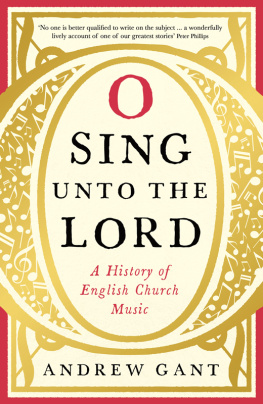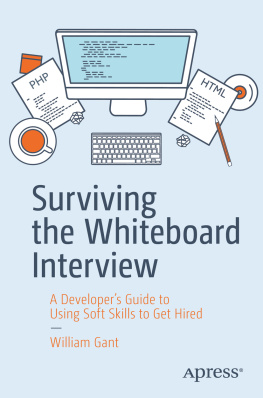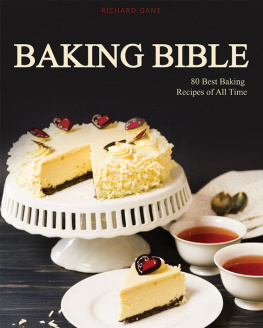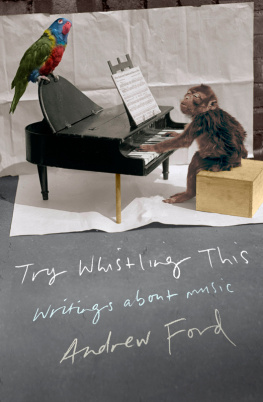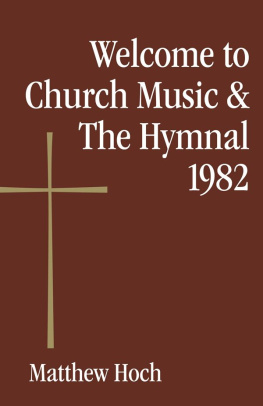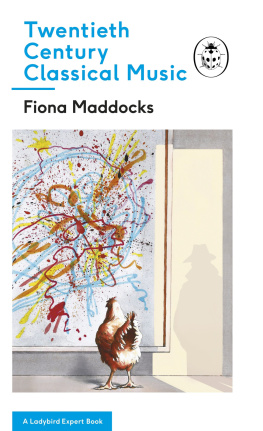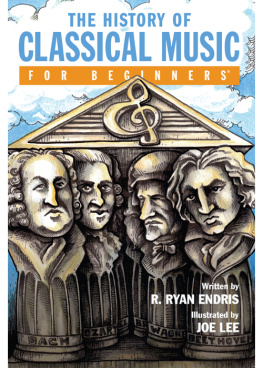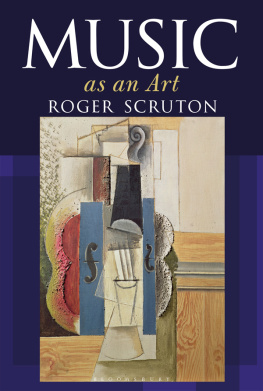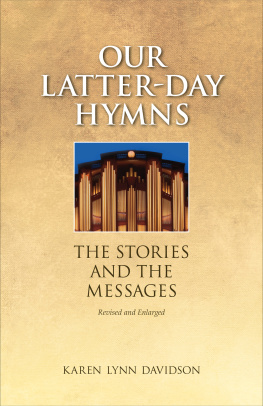O SING UNTO THE LORD
ANDREW GANT is the author of Christmas Carols: From Village Green to Church Choir (Profile, 2014). He is a composer, choirmaster, university lecturer and writer. He has directed the choirs of The Guards Chapel, Worcester College Oxford, and Her Majestys Chapel Royal. He lectures in music at St Peters College, Oxford.
BY THE SAME AUTHOR
Christmas Carols: From Village Green to Church Choir
O
SING
UNTO THE
LORD
A History of
English Church
Music
ANDREW GANT

First published in Great Britain in 2015 by
PROFILE BOOKS LTD
3 Holford Yard
Bevin Way
London WC1X 9HD
www.profilebooks.com
Copyright Andrew Gant 2015
The moral right of the author has been asserted.
All rights reserved. Without limiting the rights under copyright reserved above, no part of this publication may be reproduced, stored or introduced into a retrieval system, or transmitted, in any form or by any means (electronic, mechanical, photocopying, recording or otherwise), without the prior written permission of both the copyright owner and the publisher of this book.
A CIP catalogue record for this book is available from the British Library.
eISBN 978 1 78283 050 4
For Kathy
Since singing is so good a thing
I wish all men would learn to sing.
William Byrd
PREFACE
A FREEZING SATURDAY IN February. A packed football ground in England. The match is tense. The ref gives a free kick. The crowd stamps and jeers and shouts, a song swells and stirs from the stands:
youre too fat, youre too fat,
Youre too fat to re-fe-reeeeee!
Youre too fat to referee!
The tune is a hymn. The words are not. How do these fans know this tune? Are they all church-goers? Do they sing in male-voice choirs? Are they all secretly Welsh? Probably not. But they do know Cwm Rhondda.
Church music turns up in some surprising places. Its tunes, the sound of voices singing together, those familiar words: these things reach deeper into our shared folk memory than any other kind of music. It is an older and more continuous tradition than the symphony, the opera or the pop song. It is more fundamentally English than any of these. It is the music we learned first, around the school piano and at end-of-term concerts. Its the only kind of music we all do (almost everybody has sung a Christmas carol or a hymn at some time), and we reach for its familiar associations at important shared moments of our lives weddings, funerals, rugby matches whether or not we believe the words, or understand them, or have ever given them a moments thought.
English church music exists in two different overlapping traditions: art music, for trained professionals; and a species of folk music tunes, basically for everyone.
And, in its many and various guises, it remains enduringly, perhaps surprisingly, popular. The music of Eric Whitacre and Karl Jenkins tops the classical charts, unheard of for new work. Discs of early choral music sell throughout the world, including in those countries where the indigenous tradition could hardly be more alien. BBC Radio 3s Choral Evensong is the longest-running continuous radio series ever, and is still going strong. A recording of Thomas Talliss Spem in alium achieves huge sales (partly through being used in the film Fifty Shades of Grey to accompany a close encounter of the steamy kind. Nobody knows for certain the kind of event for which Tallis wrote the piece, but presumably it wasnt that).
In one of its other guises, church music charts the contours of English history. Religious movements, which have done so much to shape our national character, are represented in music, from the ornate mysteries of the Latin Mass to the fripperies of the Restoration anthem, from stern Puritan hymns and confident Victorian bombast to the more fractured, complex world-view of the twentieth century. Great political events leave their mark in music: a battle or a plot swaps a couple of monarchs around, and the Almighty is hymned for His wisdom in engaging the right management here on earth. On a dayto-day level, the practice of church music holds a mirror up to society: who heard it, and who didnt; who was allowed to make it, and who wasnt; who taught it, and how; who paid for it, and why.
And English church music exists in such a variety of forms, ushering into the light the people who knelt to hear it in so many places: the scholar in his college, the nobleman at household prayers, the recusant in her country house and the Digger in the field, the choirboy in his cassock, and the peasant in the parish with his serpent and his viol. Their music allows us to hear them talking to each other and to their God, as no written text can. No art form gets closer to their soul, because they knew when they made it that their soul depended on the honesty and integrity of this particular form of art.
This history makes no attempt to be exhaustive; rather it seeks to identify certain themes and threads and allows one or two careers to represent a theme and one or two works to represent a career. Motifs and ideas recur through the ages like a favourite twist of melody how art music differs from parish music and why; the debate between those who think fancy music gets in the way of the words and those who just like singing; the church as employer and patron; how genius works. Central to the story of church music are its people the choirboy, the parish clerk, the publisher; its texts the eternal resonance of the book of psalms; its social function choirs as a way to meet your girlfriend or count your peasants; and its ideas the Reformation, the Enlightenment, education. Some questions keep on turning up in every generation: should you let secular forms like folk-songs, dance rhythms and instruments into church? Does English music like, or need, foreigners? To what extent has our tradition has been able to embrace those of other creeds and none (even Richard Dawkins, self-appointed high priest of public atheism, finds beauty here). And a little light theology: who gets to sing to the English God? A priest? A chorister? Or can you do it yourself? These arguments have rumbled through the centuries and still do.
The phrase English church music needs a little unpicking too. Which church? Who counts as English? And quite a lot of church music was never meant to be sung in church at all. So, for the purposes of this history, the phrase is taken to mean the music of Christian denominations in England, occasionally visiting other shores where the tradition has notable antecedents or offshoots. Church music means music used in an act of worship, whether that act takes place in a church or not. Thus the Masses of William Byrd (emphatically music for worship but illegal in an actual church) are included, while Handels sacred oratorios (created for a paying audience in a theatre) are not.
So this is a history not just of the music itself, but of the people who made it. It is an attempt to track public events and official doctrine, and the soundtrack that goes with them. It is the story of the part that church music has played in ordinary lives, and the way it reflects those lives back to us. Its the biography of a tradition. A book about people, and a story of England.
In the Beginning
Hymnum canamus gloriae
Bede
AND DID THOSE FEET, in ancient time, walk upon Englands mountains green?
Probably not. But the story that Jesus Christ came to these islands with his uncle, Joseph of Arimathea, in search of a cheap source of tin, proved enduringly popular. Shakespeare and Blake both mention it. It may even hover somewhere behind the versions of the folk-song I saw three ships, in which the singer sits under a sycamore tree watching the Saviour sail up the English Channel. There are no sycamores in Bethlehem.
Next page
